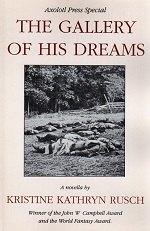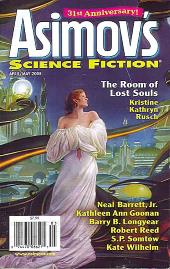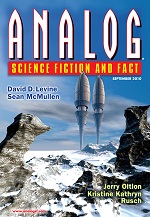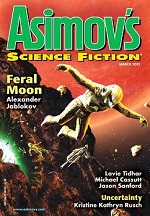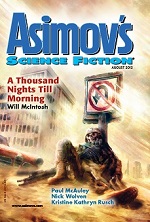Short Story
The Gallery of His Dreams
- by Kristine Kathryn Rusch
- (Axolotl Press, July 1991)
Having spent his life and his fortune documenting the American Civil War, pioneering photographer Mathew Brady is repeatedly visited by a woman of the future who asks him to photograph the horrors of the wars she knows, starting with Hiroshima.
“I’m sorry, ma’am,” Brady said. He didn’t turn to see which portraits she had indicated. “I didn’t mean to offend you. These portraits show what war really is, and I think it’s something we need to remember lest we try it again.”

